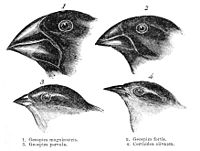
Photo from wikipedia
Influenza viruses cause approximately half a million deaths every year worldwide. Vaccines are available but partially effective, and the number of antiviral medications is limited. Thus, it is crucial to… Click to show full abstract
Influenza viruses cause approximately half a million deaths every year worldwide. Vaccines are available but partially effective, and the number of antiviral medications is limited. Thus, it is crucial to develop therapeutic strategies to counteract this major pathogen. Influenza viruses enter the host cell via their hemagglutinin (HA) proteins. The HA subtypes of influenza A virus are phylogenetically classified into groups 1 and 2. Here, we identified an inhibitor of the HA protein, a tertiary aryl sulfonamide, that prevents influenza virus entry and replication. This compound shows potent antiviral activity against diverse H1N1, H5N1, and H3N2 influenza viruses encoding HA proteins from both groups 1 and 2. Synthesis of derivatives of this aryl sulfonamide identified moieties important for antiviral activity. This compound may be considered as a lead for drug development with the intent to be used alone or in combination with other influenza A virus antivirals to enhance pan-subtype efficacy.
Journal Title: Journal of medicinal chemistry
Year Published: 2021
Link to full text (if available)
Share on Social Media: Sign Up to like & get
recommendations!